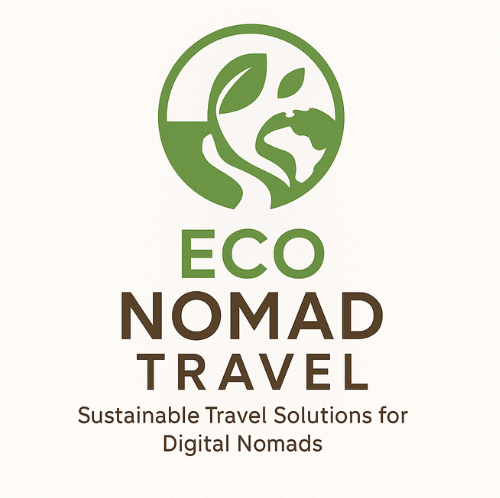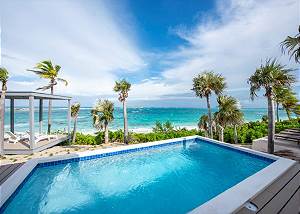
Sustainable Travel Tips for Eco Nomads: 2025 Cornerstone Guide
INTRODUCTION: WHY ECO NOMADS MATTER IN 2025
Remote work isn’t a fad anymore; it’s the new plumbing of the economy. That’s a privilege—and a responsibility. The places we love are under pressure from climate change, overtourism, and fragile local economies. Eco nomad travel is the antidote: a set of practical, repeatable choices that keep your footprint light, your presence respectful, and your experiences rich. This guide goes deep—clear principles, field-tested workflows, and 25 concrete moves you can deploy today. No finger-wagging. Just better defaults.
WHAT “ECO NOMAD TRAVEL” REALLY MEANS
An eco nomad is a digital nomad who designs for low impact by default: fewer flights, longer stays, rail-first regional moves, walkable bases, plant-forward eating, and spending where it sticks (owner-operated businesses, community tours, fair-wage guides). It’s not about perfection. It’s about turning sustainability from an aspiration into muscle memory.
THE CORE PRINCIPLES (YOUR NORTH STAR)
- Fewer, longer, smarter: Fewer legs; longer stays; smarter routes.
- Proximity is a superpower: Choose neighborhoods where life is a short walk away.
- Evidence beats adjectives: Prefer operators with measurable policies over “eco” slogans.
- Circular habits > disposable convenience: Refill, repair, reuse.
- Spend like a neighbor: Direct more of your budget into local hands.
A SIMPLE PLANNING FRAMEWORK (5 STEPS)
- Pick a loop, not a bucket list: Anchor 2–3 hubs connected by reliable rail or coach.
- Compare door-to-door time (not just flight time): Security, transfers, and downtown access matter. See Train vs Plane Emissions 2025.
- Book transit-served stays: Transit stop at the door, market in 5 minutes, park in 10. Vet with Sustainable Stays: Avoid Greenwash.
- Pre-decide your circular kit: Purifier bottle, solids/refills, collapsible container, repair mini-kit. Build from Zero-Waste Packing List 2025 and Eco Travel Kit 2025.
- Spend where it sticks: Markets, co-ops, community-led tours, artisan workshops. See Low-Impact Travel Habits.
THE 25 SMART WAYS (TACTICS YOU CAN USE RIGHT NOW)
Planning & Mindset
1) Commit to the “two-hub rule.” Plan one region, two primary bases, minimum 5–10 nights per base. Day-trip out, return at dusk. You’ll cut transit days, costs, and decision fatigue while spending more time where life happens.
2) Design with seasons, not just prices. Heat waves and storm seasons can break rail reliability and strain local infrastructure. Shoulder seasons (late spring, early fall) are your sweet spot for comfort, capacity, and community goodwill.
3) Build a realistic buffer. Leave 20–40 minutes for transfers, especially at operator changes. Hold at least one refundable backup (train or coach) for critical legs. Stress is wasteful; buffers are sustainable.
4) Make your own “eco bar.” This is a personal checklist: max rail leg (~800 km), market distance (~500 m), transit frequency (≤10–12 minutes), walk score (your own feel, not a numeric website), and a minimum stay length. If a base fails your bar, pick a different neighborhood—don’t bend your standards until the trip bends you.
5) Pre-book “friction killers.” Book the first and last long-distance moves early; leave the middle flexible. Pre-purchase museum slots or popular activities to avoid queues and surge transport. Friction is what tempts people into high-impact shortcuts.
Transport
6) Use door-to-door math, not wishful thinking. Door-to-door time = (home → station/airport) + buffer + transit time + arrival transfer. Under ~800 km in regions with good rail, trains often tie or beat short-haul flights once you count security and transfers. Bonus: downtown-to-downtown beats airport sprawl every time.
Flexible flight search: Aviasales.
7) Pick daytime arrivals. Landing at 22:45 often means you default to ride-hails. Daytime arrivals let you take airport rail or buses, walk your final blocks, and meet your host awake. Greener and calmer.
8) Merge transport and lodging with sleepers. Night trains convert a travel day into sleep + arrival. Go for couchettes or sleepers with station showers. Pack earplugs, a light scarf, and a small snack to avoid midnight purchases. More: How to Book European Sleepers (2025) · Night Trains in Europe.
9) “Last mile without a car” playbook. Default to airport train/bus → tram/metro → short walk. If transit is thin, batch rides with a shared transfer (compare on Trip.com or Kiwitaxi). If you must rent, pick compact/hybrid classes and use it as a day tool, not a daily habit.
10) Weight and volume discipline. Every kilo matters. Lightweight, compact bags make rail, stairs, and walking feasible—so you don’t end up car-dependent. Aim for a single carry-on backpack and a small day sling.
Accommodations & Workspaces
11) Location is a climate policy. Choose stays within a 10-minute walk of a transit stop, 5 minutes to a grocery/market, and 10 minutes to a park or waterfront. That geometry turns low-impact choices into the easy ones.
12) Evidence over adjectives (how to vet a stay). Look for energy/water policy pages, heating/cooling specifics, laundry-on-request, towel policies, visible waste sorting, and refill stations. Certifications help (GSTC-recognized programs like Green Key or EarthCheck; LEED for buildings), but transparent details beat badges.
13) Copy-paste inquiry (use this polite script).
“Hi, I love your location. Quick checks:
• Do you publish energy/water or waste policies?
• Are there guest refill stations or sorting bins?
• Laundry-on-request to reduce water use?
• Closest tram or bus stop and market by foot?
Thanks—I’m traveling without a car and prefer lower-impact stays.”
14) Choose workspaces that lower travel, not raise status. Daylight, plants, quiet zones, and a transit-first address matter more than foosball and neon. Ask about waste sorting and bike access. A good workspace reduces your daily miles and encourages walk breaks.
Food & Daily Waste
15) Adopt a “market + kitchen corner” routine. Markets reduce packaging and put you in the seasonal rhythm. A tiny kitchen corner (knife, cloth napkin, collapsible container) turns leftovers into tomorrow’s lunch and cuts single-use waste drastically.
16) Plant-forward by default, not ideology. Local produce, legumes, and regional staples are usually cheaper and lighter on emissions. Meat or fish can be memorable, but daily defaulting to plants and grains is where the climate math moves.
17) Master the refill triangle. Carry a purifier bottle, learn the local word for “tap water,” and save a map layer with fountains. Refill at coworking, museums, and parks. Pair with a small tote for bakery runs and fruit.
Connectivity & Tech
18) Go eSIM + offline-first. Install eSIM before you land and cache maps, tickets, and a few key phrases. Schedule sync windows, use dark mode, and kill background auto-uploads. Cloud is convenient; bandwidth discipline is greener.
Primary: Airalo eSIM.
19) Pack the “micro-power kit.” One fast charger with multiple ports, one small battery bank, one universal plug, and short cables. Fewer adapters = less weight = fewer car rides triggered by dead tech.
Community & Money
20) Spend where it sticks (and say hello). Owner-operated eateries, artisan workshops, family markets, and community-run tours keep money circulating locally. Learn greetings and a few phrases; respect is carbon-neutral and wildly effective.
21) Vote with your bank. If you can, use institutions with clear renewable commitments and transparent investment screens. Go paperless. Your money’s “sleeping footprint” travels with you.
Well-Being & Safety
22) Design a daily cadence that lowers impact. Morning market walk, midday deep work, late-afternoon park break. Fewer impulsive trips, more neighborhood rhythm. If heat spikes, shift hours earlier; your air-con use and crankiness both drop.
23) Accessibility and inclusion checks help everyone. Step-free stations, platform lifts, and ramped entrances aren’t just for wheelchair users; they make rail-first travel less brittle for everyone, especially with luggage.
Repair, Packing & Micro-habits
24) Carry a repair mini-kit. Needle, strong thread, a few safety pins, tenacious tape, tiny multitool. Fixing a strap or shoe saves money, materials, and time. Add a microfiber filter bag or capture device if you’ll use shared machines.
Measurement, Offsetting & Honesty
25) Cut first, offset last—and only with quality. Your hierarchy: avoid → reduce → replace → offset. If you offset, choose high-quality programs with credible verification and retire credits in your name. Offsets are a bandage, not a lifestyle.
DEEP DIVE: HOW TO CHOOSE ECO-FRIENDLY ACCOMMODATIONS (WITHOUT GREENWASH)
- Read what they publish: Energy/water policies? Heating/cooling design? Laundry-on-request instead of daily?
- Guest-visible systems: Real sorting bins, refill station, line-dry areas or efficient machines.
- Two location questions: “Nearest tram/metro/bus by foot?” and “Closest market?” If they can’t answer, expect ride-hails.
- Certifications: Green Key, EarthCheck (GSTC-recognized), and LEED help—but details beat badges.
- Walk the block on maps: Sidewalks, crossings, and park proximity matter more than a rooftop pool.
DEEP DIVE: BUILDING YOUR CIRCULAR KIT
Start tiny and grow only if needed. Hydration (purifier bottle); food (collapsible bowl, compact utensil, cloth napkin, a snack); toiletries (solids/refills, small bottles); laundry (microfiber capture bag, detergent sheet; air-dry when possible); repairs (tenacious tape, needle, thread, safety pins); paperwork (slim folder for tickets/permits when paper is required). See Zero-Waste Packing List 2025.
DEEP DIVE: RAIL-FIRST ITINERARY EXAMPLES
Europe (Triangle): Munich → Salzburg → Vienna (14 nights)
- 5 nights Munich (markets; day-trip by rail to Regensburg)
- 4 nights Salzburg (walk everywhere; lakes by regional trains)
- 5 nights Vienna (transit heaven; day-trip to the Wachau)
Why it works: dense, rail-linked, park-rich; zero car dependency.
Iberia (L-shape): Lisbon → Porto → Madrid (15 nights)
- 6 nights Lisbon (trams, markets, riverside walks)
- 4 nights Porto (compact, walkable; metro from airport)
- 5 nights Madrid (fast rail web; day-trips to Toledo, Segovia)
Why it works: strong intercity rail, satisfying day-trips, great markets.
Southeast Asia (Two hubs): Bangkok → Chiang Mai (16 nights)
- 8 nights Bangkok (metro/skytrain, canal boats, urban parks)
- 8 nights Chiang Mai (walkable old city, cafes, night markets)
Why it works: frequent connections; long stays minimize flights.
DEEP DIVE: FOOD, WATER, AND WASTE ROUTINES
- The market loop: breakfast fruit and bread; simple home-cooked dinners every other night—cuts packaging and cost.
- Restaurant signals: seasonal menus, transparent sourcing, smaller menus.
- Water: purifier bottle + mapped fountains; refill at coworking, museums, and parks.
- Waste: learn local rules; if your stay lacks bins, ask—politely.
DEEP DIVE: DIGITAL HYGIENE (LOW-CARBON CONNECTIVITY)
- Cache first, stream second: download maps, translation packs, and media for offline use.
- Batch uploads: sync on Wi-Fi in the evening.
- Power discipline: fast-charge in short bursts; avoid all-day trickle.
- Lean hardware: one efficient device that does 90% beats three half-used gadgets.
DEEP DIVE: MONEY & IMPACT
- Choose payment tools with sustainability statements where possible; go paperless.
- Track spend distribution: aim the majority at local, owner-operated food, services, and experiences.
- Tip fairly and consistently: a supportive social footprint is part of sustainability.
FREQUENT DILEMMAS (AND HOW TO HANDLE THEM)
“I can’t find a certified hotel in my price range.” Pick the closest thing with transparent policies and a transit-first location. A modest, walkable guesthouse with clear water/energy info can beat a “green” resort miles from anything.
“The only realistic route is a flight.” Consolidate hops, choose a daytime nonstop, pack light, and extend your stay. If you offset, buy high-quality credits and keep a record of retirements.
“The coworking near me is shiny but 40 minutes away.” Find a smaller space within walking distance for daily use; treat the shiny one as a weekly field trip.
“Friends want to rent a car.” Offer a scenic rail/ferry plan with a picnic. If a car is necessary, go compact, fill the seats, and plan multi-stop days.
“I’m burned out.” Sustainability includes you. Shorten the loop, extend a hub stay, schedule a weekly no-plans day, and fix a daily park walk.
ACCESSIBILITY & SAFETY NOTES
- Step-free navigation: check station maps; many rail networks offer assistance (book ahead).
- Heat and air quality: follow local alerts; shift hours earlier; pick shaded routes; hydrate.
- Night moves: if a late arrival is unavoidable, pre-book a reliable transfer and notify your host.
SAMPLE SCRIPTS YOU CAN USE
Tour operator vetting:
“Hi! We’re traveling without a car and prefer small groups. Could you share max group sizes, wildlife distance rules, and any conservation projects you support? Also, is your meeting point near public transit?”
Coworking inquiry:
“Hello! Do you have daylight work areas, quiet zones, and bike access? What’s the nearest tram/metro stop by foot? Do you provide bottle refill stations and visible waste sorting?”
Market conversation starter:
“Hi! What’s in season this week? I’m cooking simple meals—any local favorite I should try?”
PUTTING IT ALL TOGETHER: A 14-NIGHT LOW-IMPACT TEMPLATE
- Nights 1–7: Hub A (central, transit-rich). Day-trips by regional rail.
- Nights 8–14: Hub B (different vibe, similar transit quality).
- Inter-hub move by day rail or a night train; arrive downtown.
- Two museum bookings, one community-led tour, two park days, three market dinners, two restaurant splurges.
- eSIM installed before landing; offline maps ready; repair kit packed.
- Spend distribution goal: ≥60% local, owner-operated.
CHECKLIST: PRE-DEPARTURE (PRINT THIS)
- □ Choose one region, two hubs, 5–10 nights each
- □ Book first/last long-distance legs and one backup
- □ Confirm stay location (transit, market, park) + policies (water/energy/waste, laundry)
- □ Install eSIM; cache maps, tickets, translation (Airalo)
- □ Pack circular kit + repair mini-kit (guide)
- □ Draft two day-trips per hub; leave space for serendipity
- □ Build transfer buffers; prefer daylight arrivals
- □ Decide your “splurges” and offset with low-cost, low-impact days
- □ Practice greetings; save key phrases offline
- □ Back up docs; go paperless unless required
BONUS: SAMPLE REGIONAL LOOPS WITH DOOR-TO-DOOR THINKING
Nordic Rail-Blue Loop (Copenhagen–Gothenburg–Oslo)
Fast intercity links, walkable cores, abundant parks, strong bike lanes. Transit from airport to downtown is seamless; eSIM setup is trivial. Compare cross-border bus/rail on Trip.com; test shoulder-season timing for lighter crowds.
Alpine Arc (Zurich–Innsbruck–Salzburg)
Dense rail mesh, lakeside promenades, mountain day-trips without cars. Night trains in/out consolidate lodging+transport. Markets make plant-forward eating easy and joyful.
Coastal Iberia (Valencia–Alicante–Murcia)
Intercity rail plus tram systems; seafood markets and urban beaches reachable on foot or bike. Respect dune/reef rules; refill often; time siestas like a local.
READ NEXT (INTERNAL GUIDES)
- Eco Travel Places 2025
- Green Travel Guide 2025
- Sustainable Travel Guide
- Sustainable Stays: Avoid Greenwash
- Zero-Waste Digital Nomad Packing
- Workation Cities Without a Car (2025)
PLAN & BOOK WITH LOW IMPACT
- Find flexible, nonstop flights (Aviasales)
- Instant eSIM for seamless arrivals (Airalo)
- Compare regional rail/bus + flights (Trip.com)
Advanced Strategies for Thriving as an Eco Nomad
Building Sustainable Routines Abroad
Eco nomad travel isn’t just about where you go—it’s about the routines you create once you’re there. Establishing a consistent rhythm of work, rest, and exploration helps reduce unnecessary trips and makes sustainable choices easier. For instance, shop at the same local market each week, take daily walks through a nearby park, and schedule coworking sessions that align with public transit hours. These practices lower your carbon footprint while grounding you in the community. By making sustainability habitual, you spend less energy making decisions and more time enjoying your surroundings.
Integrating Health and Sustainability
Healthy living and eco-friendly travel go hand in hand. Walking or cycling instead of using taxis doubles as daily exercise. Choosing plant-based meals lowers emissions while improving nutrition. Even sleep patterns matter: aligning your schedule with natural daylight reduces the need for artificial lighting and screen time. By designing routines that prioritize both personal well-being and environmental responsibility, you reinforce the long-term viability of your nomadic lifestyle. For more ideas, see our guide on sustainable nomad living.
Leveraging Technology Wisely
Digital tools can either help or hinder sustainability. Eco nomads should evaluate their apps and devices not only for convenience but also for their environmental impact. For example, use offline maps rather than constant GPS, schedule cloud backups during off-peak energy hours, and choose platforms that invest in renewable-powered data centers. Tech also enables smarter planning—apps like Airalo and Aviasales make it easy to cut plastic waste from SIM cards and reduce emissions by booking direct flights. With intentional use, technology becomes a partner in sustainability rather than a hidden drain.
Community as a Multiplier of Impact
One eco nomad can only do so much, but a group of them can reshape an entire destination. By joining local eco initiatives—such as community gardens, plastic cleanups, or educational workshops—you multiply your impact. Even informal community acts, like sharing leftover food in a coworking fridge or coordinating group rail trips, reinforce low-impact norms. Many cities now host sustainability meetups where nomads exchange tips and resources. By embedding yourself in these networks, you’ll not only travel responsibly but also inspire others to follow your example. More inspiration: Sustainable Adventures Guide.
Future-Proofing Your Travel Choices
Sustainable nomadism is about resilience as much as responsibility. Choosing rail-linked regions, booking accommodations with renewable energy commitments, and adopting minimal gear strategies help ensure your lifestyle isn’t disrupted by rising fuel prices or tightening regulations. More destinations are introducing eco taxes and limits on high-impact tourism; nomads who already practice low-impact travel will adapt smoothly. By anticipating these shifts and designing your travel style accordingly, you’ll stay ahead of the curve and help set the standard for the next wave of responsible explorers.
CONCLUSION: BECOMING A RESPONSIBLE ECO NOMAD
Eco nomad travel is not a performance; it’s a pattern. You’ll still make trade-offs, miss trains, and fall for the occasional plastic-wrapped snack. That’s fine. The win is that your default settings now tilt the world in a better direction: fewer hops, longer roots, stronger neighborhoods, lighter bags, and richer days. You’ll see more by moving less. You’ll meet more people by buying from more people. And you’ll come home with stories that don’t require an apology.
Make your loop. Pack your kit. Choose the walkable base. Ask better questions. Spend where it sticks. Then enjoy the strange, delightful texture of the world—responsibly, repeatedly, and with the kind of care that makes you a welcome guest anywhere you go.
Further Resources & Expert Insights
Keep exploring the world of eco nomad travel with these in-depth guides and trusted tools. Each resource below deepens the strategies covered above and helps you plan low-impact adventures that respect local communities while protecting the planet.
Eco Nomad Travel Knowledge Hub
- Low-Impact Travel Habits – daily actions that shrink your footprint without sacrificing comfort.
- Train vs Plane Emissions 2025 – real numbers for smarter route planning.
- Eco-Friendly Travel Kit 2025 – build a reusable, minimalist packing list.
- Zero-Waste Digital Nomad Packing Guide – essentials for light, circular travel.
- Night Trains in Europe 2025 – practical tips for rail-first nomads.
- Sustainable Stays: Avoid Greenwash – how to vet accommodations with evidence.
- Sustainable Digital Nomad Lifestyle – designing a long-term low-impact routine.
Authoritative Sources & Data
- UN World Tourism Organization: Sustainable Development
- IPCC Sixth Assessment Report on Climate Change
- Global Sustainable Tourism Council Criteria
- European Environment Agency: Transport & Environment
Plan Your Low-Impact Journey
These partner tools simplify booking while keeping emissions in check:
• Aviasales – find flexible, nonstop flights to reduce total carbon.
• Airalo eSIM – instant global connectivity without plastic SIM waste.
• Trip.com – compare multi-modal routes (rail + coach + air) in one search.
FAQs: Sustainable Travel Tips for Eco Nomads
Sustainable travel tips for eco nomads include packing light, choosing eco stays, reducing waste, and supporting local communities.
Use platforms like Ecobnb, BookDifferent, or Airbnb Green Stays, and look for certifications like LEED or EarthCheck.
Essentials include a reusable bottle, bamboo utensils, solid toiletries, cloth tote bags, and solar-powered chargers.
Choose trains, buses, biking, and walking for short trips. For flights, pick non-stop routes and offset emissions responsibly.
Slow travel reduces flights, cuts emissions, and allows deeper cultural immersion while supporting local communities for longer periods.
Eat at family-owned restaurants, shop local, join cultural workshops, and book community-led tours and accommodations.
Yes. Many nomad visas promote slow travel by encouraging longer stays, which reduces frequent flights and supports local economies.
Prioritize plant-based meals, shop seasonal produce at local markets, and avoid heavily packaged or imported foods.
Green coworking spaces use renewable energy, reduce waste, offer bike access, and foster communities focused on eco-conscious habits.
Yes. Minimalism reduces waste, lowers emissions, saves money, and allows nomads to focus on meaningful experiences over possessions.


